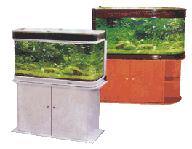
One of the primary considerations in choosing an aquarium tank is determining the size that the tank needs to be. One of the important considerations would be the budget.
It usually follows that the larger the aquarium, the larger the price tag, so before you set your heart on an ocean of an aquarium tank, you should determine how much you want to spend.
Secondly, it will be the tank placement. You need to consider where you will keep the aquarium. This will help you determine how big an aquarium you can have.
- Place it where it will be seen, but not the busiest part of the house. The commotion can disturb the fish.
- Keep your aquarium tank out of direct sunlight, which will contribute to algae growth and cause temperature fluctuations.
- Make sure your aquarium is away from windows or vents. Air drafts can disrupt the environment of the aquarium.
By now, you have to look into what type of tank do you want. First, you should decide whether you want a saltwater or freshwater tank. The main differences are that saltwater fish are generally more colorful compared to their less vibrant freshwater cousin, while freshwater tanks are considerably cheaper and easier to set up and maintain than saltwater tanks. For a beginner fish owner, freshwater tanks are strongly recommended.
Another decision you will need to make is glass or acrylic. Acrylic tanks come in more shapes and are clearer and more heat-resistant. Glass tanks, though, are much cheaper and more resistant to scratching and damage.
Last but not least, you should consider the size and species of your fish. Naturally, the larger the fish, the larger the tank they will need. Remember, though, you shouldnít force your fish into a habitat that doesnít suit him because you canít afford the tank or donít have the room. Determine the maximum size of the tank you can have before researching what fish and how many will fit in it.
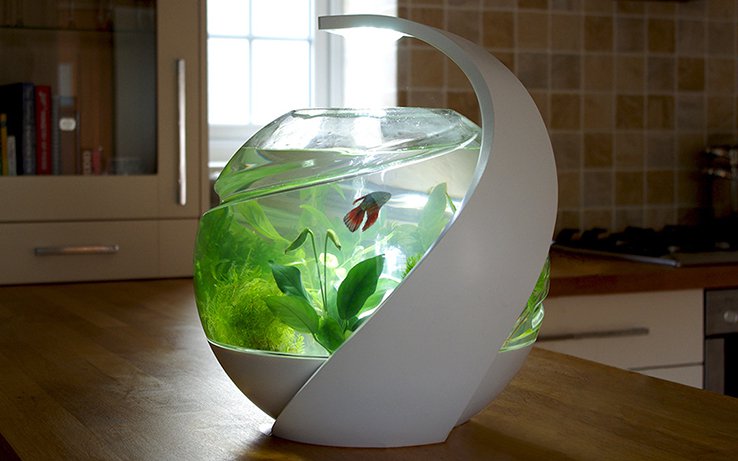
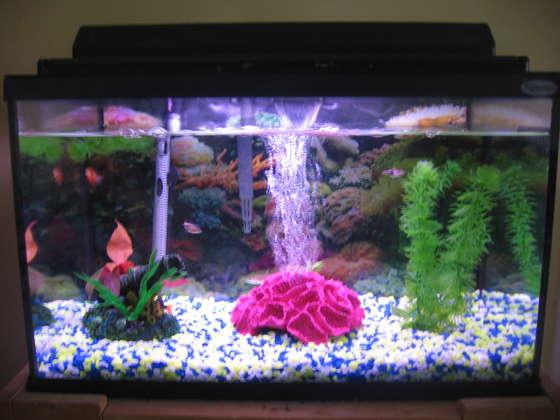
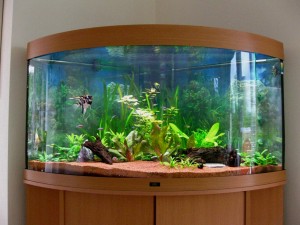
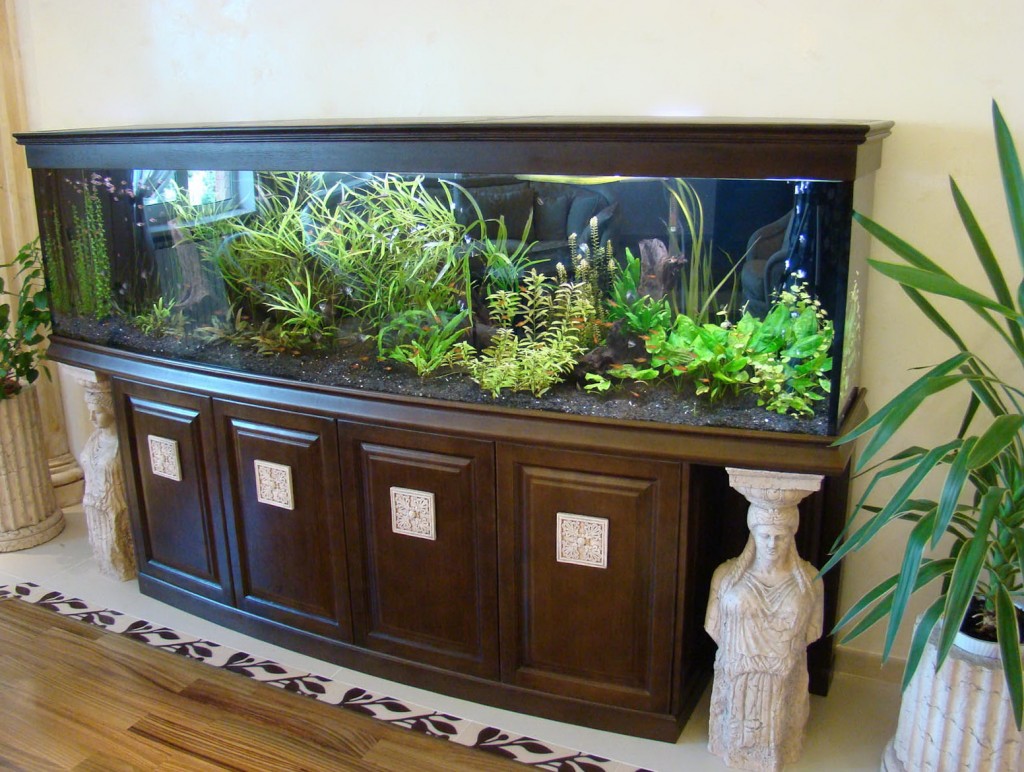
- Unplug the heater and filter. If using an air pump, unplug and remove the air stone from the water.
- Remove large ornaments and plastic plants. Lift slowly as not to stir up the fish waste underneath. Important note Ė if you have live plants, never remove them as you will disturb root growth.
- Rub the inside of the glass with an algae scrubber or clean facecloth. Slow, light circular motion works best. Although the glass is tempered and can resist pressure, you donít want to challenge the strength by pressing too hard!
- Using a gravel siphon, remove 25% of the water into a large bucket. To be more specific, move the siphon end through the gravel in a twisting and circling motion. This will further enhance the vortex sucking up the detritus on the bottom. If the gravel layer is thick, make sure to dig past the top layer retrieving tiny particles that get wedged deep down.
- Rinse the filter pad and rub off algae growth on the ornaments inside the bucket of fish water you just removed from the aquarium.
- Place filter cartridge/media and ornaments back into the tank and filter respectively.
- Empty the fish water bucket into the bathtub. Fill the bucket with tap water. Move the thermometer from the aquarium into the bucket and adjust the water temperature accordingly to match the temperature of the aquarium.
- Add water conditioner and aquarium salt according to the direction on each package. If your aquarium is still in itís cycling period (first 3-4 months) add living bacteria supplement too.
- Swirl your hand in a circular motion inside the bucket to help the salt dissolve quickly. Avoid dumping salt right into the aquarium, it can cause haywire in the internal organs if ingested. This is why itís important to dissolve it first.
- Fill the aquarium back up slowly. I like to use a water jug, itís easier to lift then a big bucket and prevents spills.
- If using a power filter (the kind that hangs on the glass) fill it up with water.
- Plug in the heater and filter and arrange ornaments to your liking. Keep the lights off for a few hours, darkness is calming for your aquatic inhabitants as they adjust from the stress of the water change.
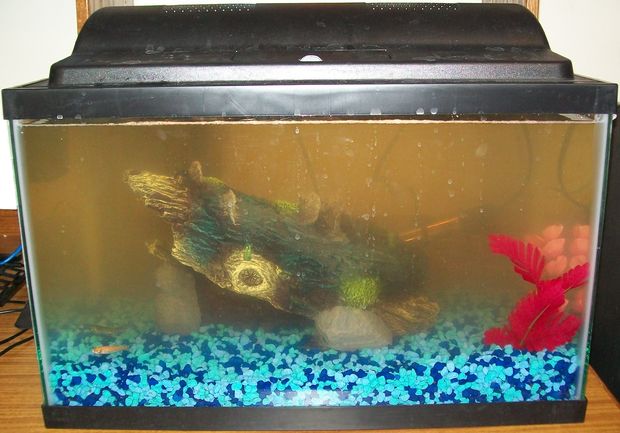
Before
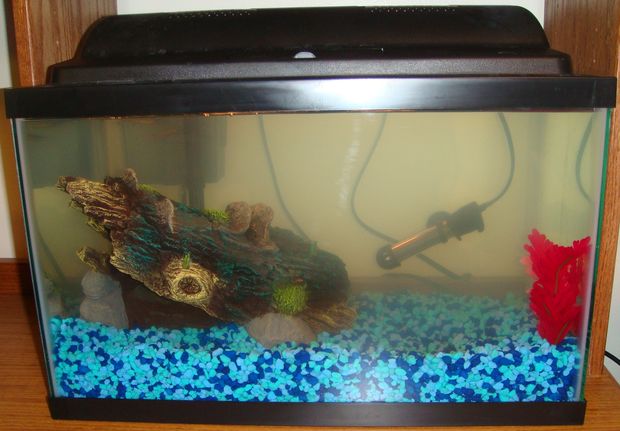
After
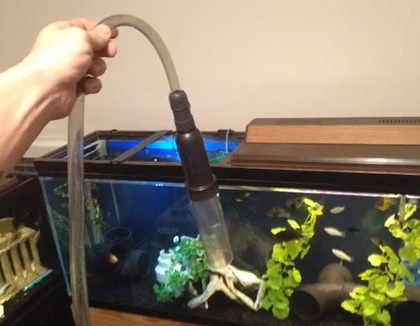

Every fish tank is different so the maintenance schedule you follow for your tank may be different from the schedule someone else follows. There are a number of factors to consider when determining your maintenance schedule.
- Tank Placement - The reason the setup is important when it comes to maintenance and cleaning is that if you place the tank in a location hard to get to, chances are it will not be cleaned on a regular schedule. Therefore, make sure the placement of the tank is such to give you adequate room.
- Tank Size - Interestingly, a larger tank actually requires less maintenance than a smaller tank. The reason is that the larger tank has more water volume, meaning the waste excreted by the fish along with chemicals and other particles are dispersed over a much larger area. Therefore, if you buy a 10-gallon tank opposed to a 50-gallon tank, you can expect to clean the smaller one more often.
- Filtration System - A filtration system is crucial to keeping the tank clean and the environment healthy. Many people will use biological filtration, which allows the right amount of "good" bacteria to grow while maintaining the proper level of Nitrite coupled with a mechanical filter or chemical filter. The mechanical consists of a box that fits within the tank in which some type of media is used to filter out waste and other particles. The chemical filter uses chemical media such as carbon or chemical resins to absorb the waste.
- Feeding Habits - One of the most common mistakes made by fish owners is that they feed the fish too much and too often. When there is excess food in the water, it causes pollution. Therefore, purchase the appropriate food for the fish you have and read the instructions to feed them only as much as they will eat in one setting and to know how often they should be fed.
- Number of Fish - The general rule for fish is that for every gallon of water, you should have no more than one-inch of slim-bodied fish. When a tank is filled with too many fish, there is excessive waste, food particles, and chemicals floating around, making maintenance difficult as well as the tank unhealthy
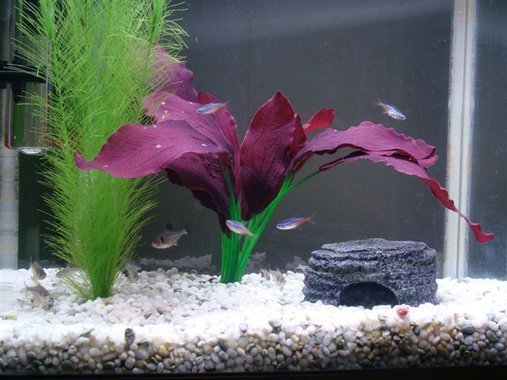
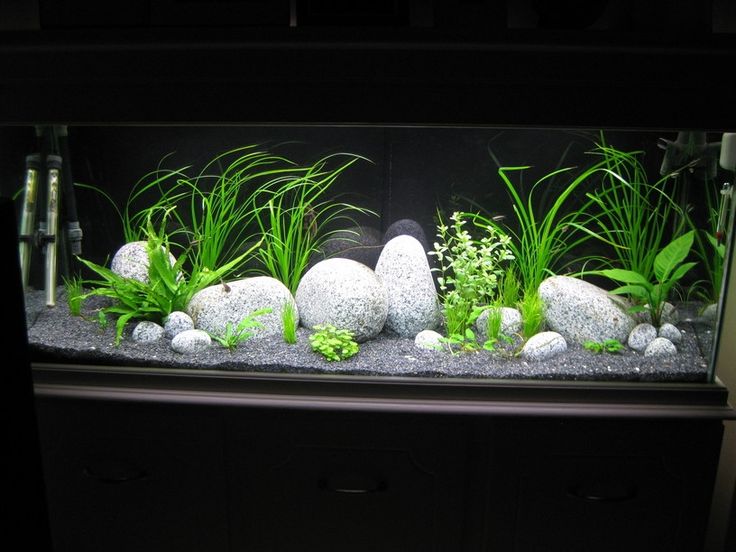
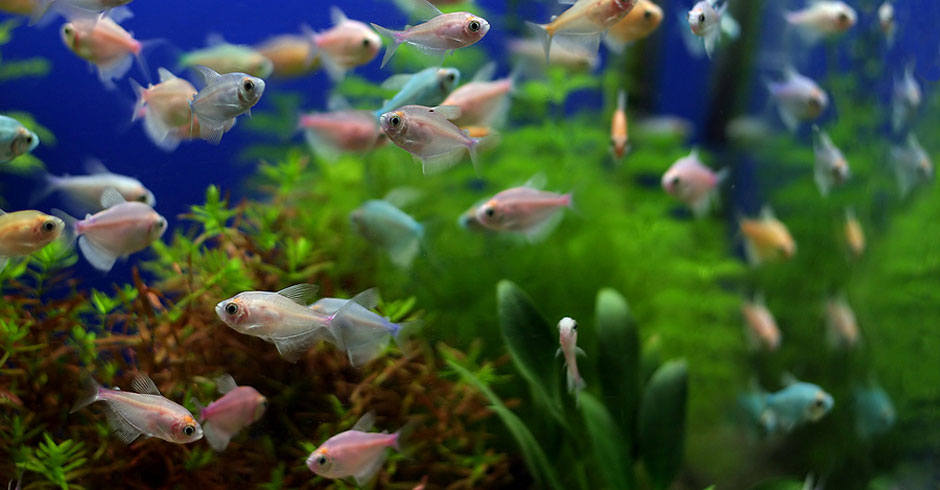

Maintaining a fish tank is essential for the fish's health. It could be quite a daunting task, but it's worth it.
- Clean your fish tank once a week. When you change water, only change 10-25% of it per week. Scrub the walls with a sponge or aquarium scraper once every two weeks or as needed.
- Don't remove the fish when cleaning, it can stress the fish. Don't change more than 45% of the water per water change and don't use soap or any chemicals.
- Change the water weekly. Change or rinse the filter media monthly. Clean the tank walls by scraping. Vacuum gravel weekly. Rinse ornaments monthly in conditioned water.
- Keep feeding your fish the same amount of food as you normally do. Vary their food though-- e.g. flakes for a week, pellets for a week. Supplement their regular diet with treats like blood-worms or vegetables. Research what is best for your fish species.
- Play with your fish. You can teach them tricks, watch them chase your finger or even gently pet your fish.
Add algae eaters and snails to the tank to create a self-cleaning ecosystem. This will reduce the number of times you need to clean the aquarium walls each year.
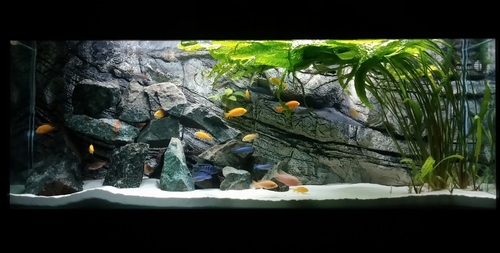
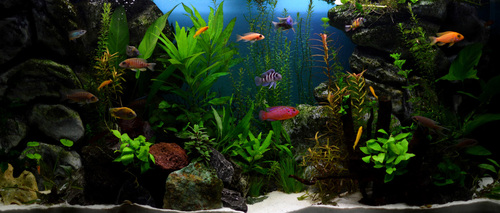
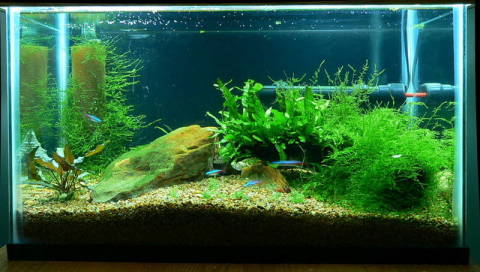
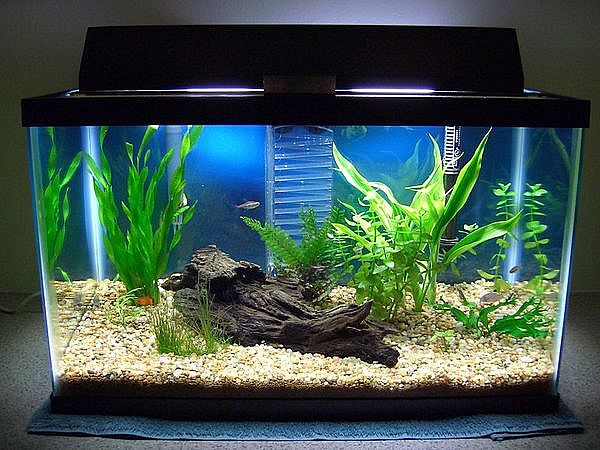
Fish that lives in inland water bodies, rivers, streams and lakes are freshwater fish. Fish that lives in openwater in the sea are marine fish. Marine fish are also called saltwater fish due to them living in and requiring water with higher salt content.
Freshwater fish has very different colour and shape differences to marine fish. Generally, freshwater fish are not as brightly coloured and colourful compared to marine fish.
Fishes that live in freshwater tend to have less saline body fluids than their surroundings. There is pressure for water to move from the less saline side to the more saline side. Freshwater fish tend to gain significant amounts of water through their gills and the skin over their bodies. Scales help to retard this movement.
Body tissues in a saltwater fish contain less salt than the water in which it lives. Because the saltier environment in the outside water draws water from body tissues, a saltwater fish constantly loses water through its skin and gills. To compensate and prevent dehydration, a saltwater fish drinks large quantities of saltwater, produces very little urine and secretes salt from this water through its gills.
If you are differentiating them in the fish shop, you can use tank temperature as a guide. Marine tanks is kept at a lower temperature compared to freshwater tanks. Besides the temperature difference, marine tanks also have a better and stronger water circulation compared to freshwater tanks.

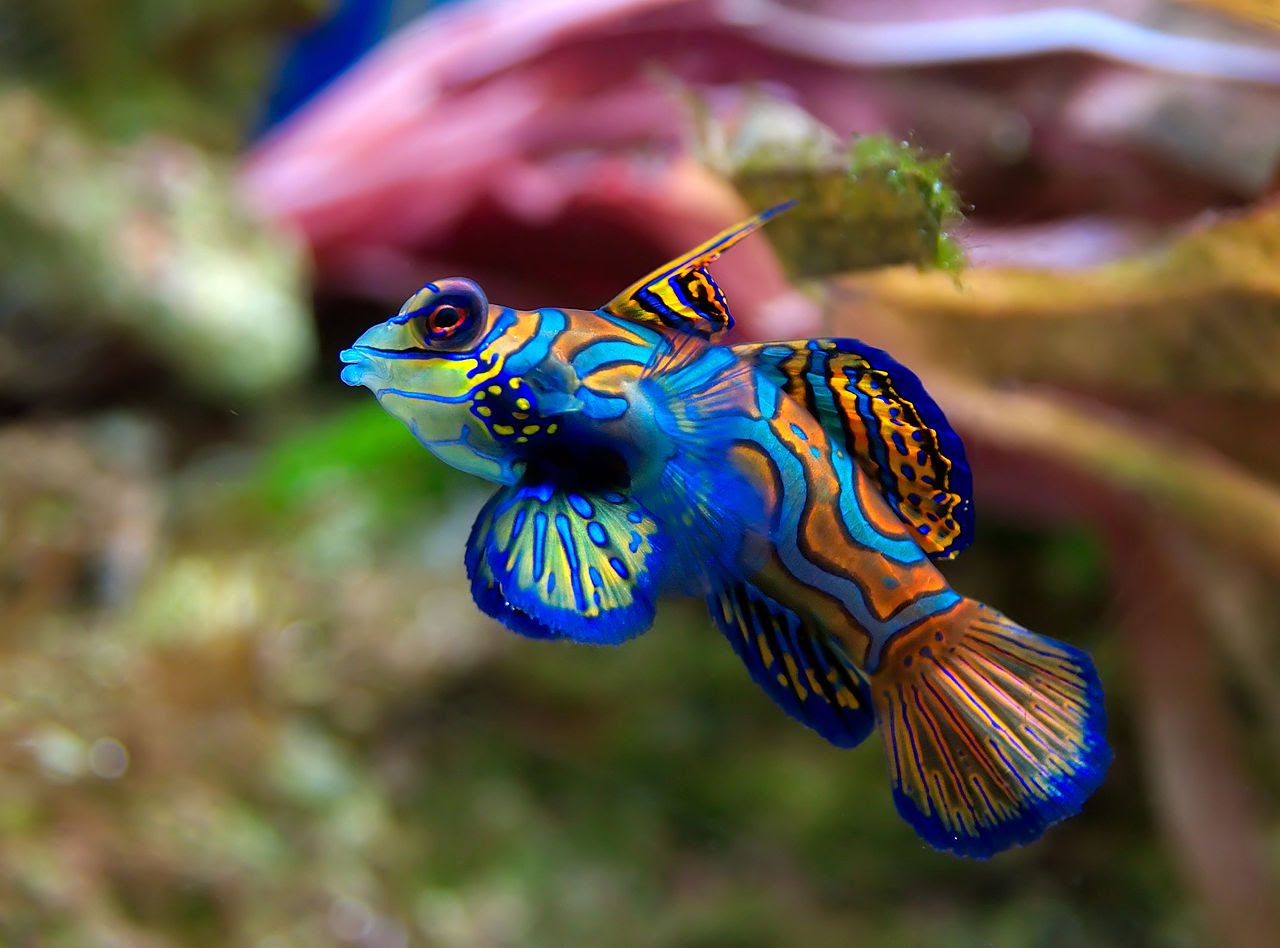
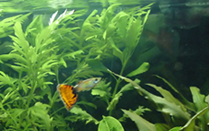
Freshwater Aquarium Maintenance
Daily Maintenance
Take advantage of your daily feeding time to check a few things in your tank. First, look at your fish. Take at least a few minutes to observe them each day. Get to know their appearances as well as their behaviors. Once you become very familiar with your fish, it will be easy for you to notice any changes that could indicate a problem.
Check the temperature of the tank every day to make sure it is at an appropriate level and the heater is functioning properly. As long as the temperature stays within a range of 3 or 4 degrees, your fish should do just fine, but if it is varying more than that, you will want to inspect your heater and perhaps consider purchasing a new one. Another good idea is to touch the tank with the back of your hand any time you are near it, just so you can immediately recognize an extreme temperature change.
Checking the filter should be another part of your daily maintenance routine. Many filters will run reliably for years and years, but at any time, a problem can arise. Make sure the filter is still running and that the water is flowing at the same rate as usual. A filter that is partially clogged or has stopped running altogether will immediately begin to put the health of your fish at risk.
Weekly MaintenanceSeveral tasks should be performed on a weekly basis, if possible. These include water changes, glass cleaning, and vacuuming.
Water ChangesOne of the most serious problems a fish tank will encounter is waste buildup. In the wild, waste will quickly disperse throughout the water, but in a tank, waste can quickly accumulate. Waste buildup is a problem because it can make a tank appear dirty, but it also brings a much more serious problem: ammonia. This substance is produced by fish and by the bacteria that break down waste, uneaten food, and other things in the water.
One way to keep debris buildup to a minimum is to conduct frequent water changes. Regular, partial water changes are unequaled in their ability to keep a tank fresh and your fish healthy. Fish are constantly producing waste (urine, feces, and other wastes, such as ammonia), and in a tank, this waste has no where to go. In a dirty tank, fish are forced to intake these wastes through their gills every time they breathe.
Recommendations on how much water should be changed during each water change vary greatly, from 10 percent to 100 percent. Simply put, the bigger the water change, the better. If you can change all of the water on a weekly basis, your fish will be better off for it. However, since many hobbyists will not be able to find the time or energy to complete that task, a 50-percent change once a week is recommended and seems to work well for most freshwater tanks.
A water change can be simple or more complicated, depending on the method you choose. The tried-and-true bucket and hose method is probably the easiest and most popular. To use this method, simply place a bucket lower than the aquarium and use some tubing to siphon water from the tank into the bucket.
There are also water-driven changers that avoid the danger of spilling a bucket of water all over the floor. These changers use the flow of water from the tap to create suction in a tube. When the appropriate amount of water has been taken out of the aquarium, the flick of a switch allows water to flow from the tap back through the tubing and into the aquarium. Remember to always make sure that the replacement water is the same temperature as the water that was removed to avoid shocking your fish.
Glass CleaningCleaning algae off of the glass once a week will keep your tank looking clean and make for easy viewing of your fish. Keep in mind that algae is not a bad thing, when confined to the glass, so it is a good idea to clean only the panes of glass that you use for viewing and clean any others less frequently. Glass cleaning will be performed with a scraper made of metal or plastic blades or an abrasive pad. Work slowly and smoothly, being careful not to scratch the tank.
VacuumingSome hobbyists do not vacuum the gravel ever time they change the water, but a good vacuuming once a week is highly recommended. Keeping the gravel free of detritus will allow the filter to function more efficiently. To vacuum the gravel, use a siphon with a gravel tube on the end, plunging the tube into the substrate. As the gravel is lifted partway up the tube, dirt particles (including uneaten food and feces) are sucked up and out of the tank, and then the gravel is dropped back to the bottom of the aquarium.
Monthly MaintenanceFilter Cleaning
Biofilters can become clogged with debris, preventing a smooth flow of water. A gentle rinsing with water from the tank at its normal temperature should be sufficient to clear the filter of any clogs.
Cover Glass CleaningWhether you have a glass top or a hood top on your tank, any tank cover will require a regular cleaning. The outside will be dusty, and the inside will have accumulated calcium deposits and algae, particularly near the light. It is especially important to clean the cover regularly if youíre keeping live plants in the tank, as buildup will significantly reduce the amount of light reaching the plants.
Marine Fish Aquarium Maintenance (Salt Water)Water Changes
Performing regular water changes is one of the best ways to keep your aquarium up and running, as it is one of the most efficient nitrate reduction methods. In most cases, frequent small water changes are better than infrequent large water changes. Most experts recommend changing about 10 percent of the water every two weeks. In a very large system, a monthly water change might do the trick, but a biweekly schedule is safer.
Changing the water in a saltwater tank is a bit more complicated than changing the water in a freshwater tank. However, this task is much easier now than it was in the past. Previously, to add water to a saltwater aquarium, the hobbyist would have to attempt to mix up their own salt water concoction by combining various chemical elements, or they would have make a trip to the beach to collect natural salt water. Thanks to modern technology, saltwater changes today are not nearly so challenging. One-step salt mixes are widely available, making it easy and inexpensive to perform as many water changes as a tank requires.
To change the water, you will first need to disconnect all power to your tank. Then, remove and clean the cover glass and clean any other glass panels that are due for a cleaning. Siphon at least 10 percent of the water out of the tank and into a bucket, and then rinse any filter media in the bucket. At this time you should also clean and rinse any pumps, hoses, or other attachments using aquarium water, and clean "salt creep" from the top edges of the aquarium. Using a commercial salt mix and dechlorinated tap water, mix a batch of new salt water. Once youíve made sure the temperature and salinity of the new water match that of the current aquarium water, you can slowly add the replacement water into the tank. Finally, turn the power back on and return the cover glass.
Daily MaintenanceSome maintenance tasks will need to be completed more often than others. Every day, you should check the water temperature and adjust when necessary. You should make sure all equipment is running properly, clean "salt creep," top off water lost due to evaporation, and check the residents of the tank for signs of distress or disease. You should also remove any uneaten food before it begins to decay.
Weekly MaintenanceEvery week, you should test the water for ammonia, nitrite, and nitrate. You should also rinse off any prefilters to remove clogs of uneaten food or debris. Scraping algae from the front pane of the aquarium should also be a weekly task.
Biweekly MaintenanceEvery two weeks (at least!), you should perform a 10 percent water change. At the same time, you can gently vacuum the substrate. A few days before or after completing the water change, you should remove and/or replace any mechanical filtration media. Clean the cover glass at this time, removing salt buildup, calcium deposits, dirt, etc, to improve the look of the aquarium as well as to increase the amount of light that is able to shine through the glass. This is also a good time to check your power sources and make sure they are working well and are free of "salt creep."
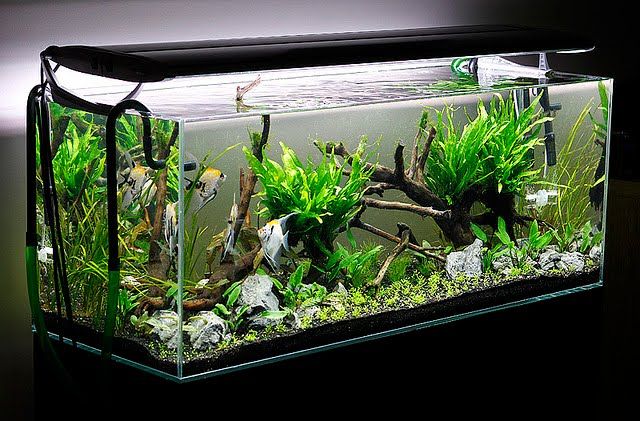
Fresh Water Aquarium
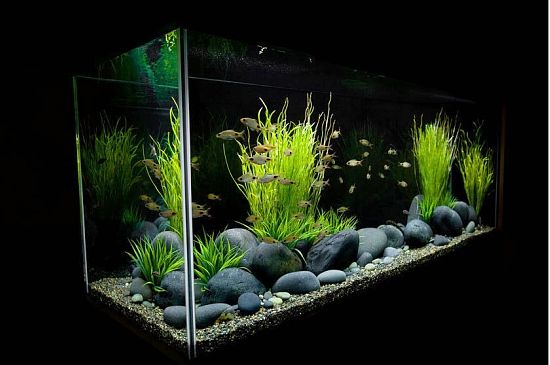
Fresh Water Aquarium
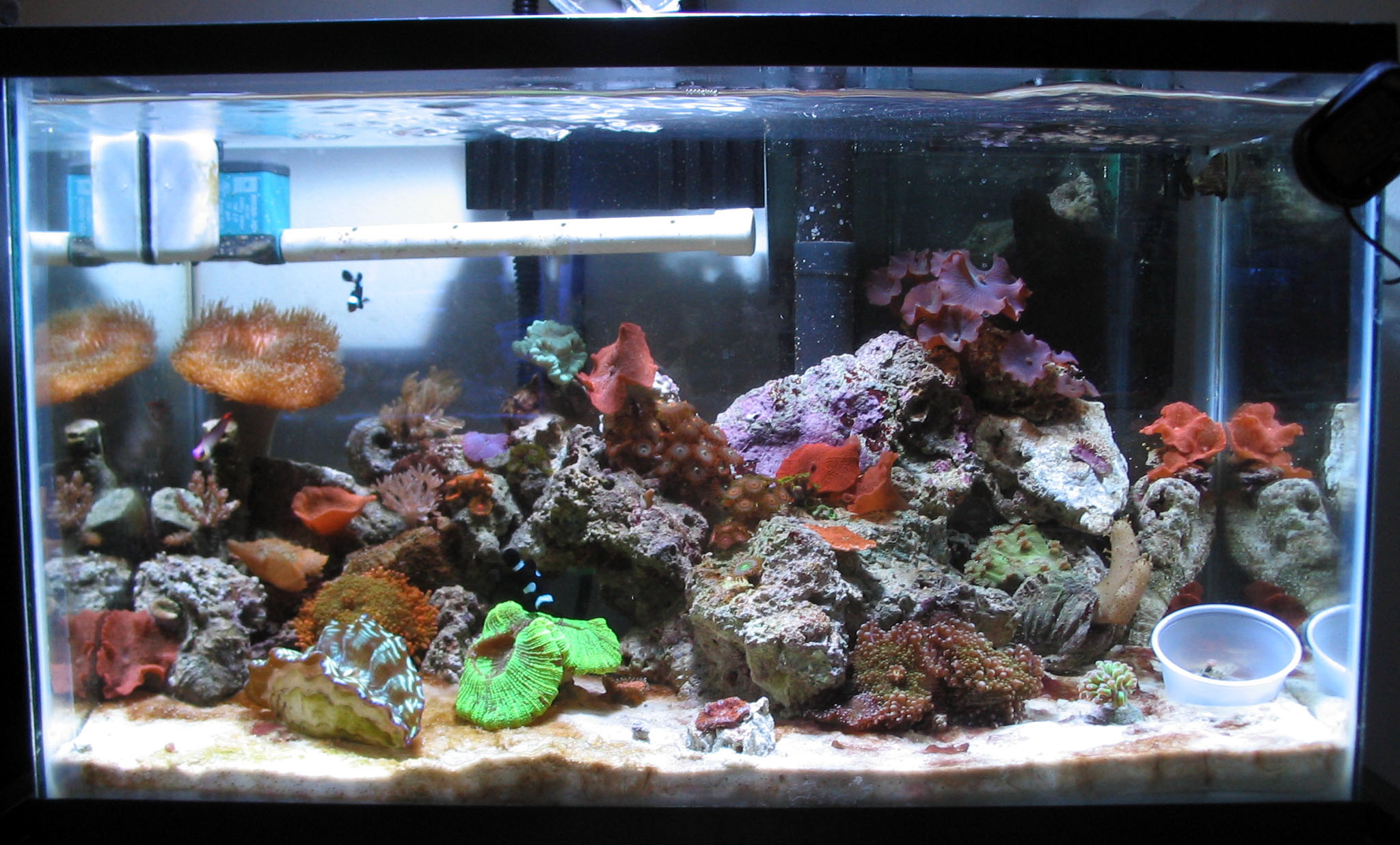
Marine Aquarium
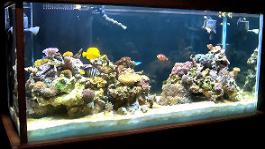
Marine Water Aquarium
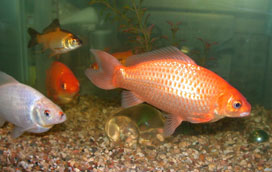
Fresh Water Fish
Marine Fish